 |
Vol 1, No 21
15 November 1999 |
|
|
Building Homes, Building Politics Berlin's post-war urban development and ideology Juan Jose Gomez Gutierrez When the Red Army took Berlin in May 1945, almost a quarter of the buildings were destroyed or badly damaged. Half of the 245,000 homes which had existed before 1936 counted among those ruined. Urban reconstruction then became a major priority. In Berlin, as in the rest of Germany, politicians and town planners conceived the reconstruction not only in terms of meeting the immediate needs of housing and administrative spaces but also in terms of a new conception of architecture that would contribute to fulfilling the desires of peace and democracy of the defeated Germans. From 1949 onwards, this task was understood in a completely different manner on each side of the wall. The division of the city was, however, preceded by a short period that witnessed some attempts to undertake an all-Berlin reconstruction scheme. The first of these was the output of the ex-Bauhaus member Hans Scharoun, an architect equally respected by all the political parties who had remained in Berlin during the Nazi period, surviving on private commissions. In 1946, he presented a reconstruction plan made by a collective under his supervision, together with the "Zellendorf Plan," Walter Moest's project for the organisation of traffic. Scharoun's main concerns were the problems of housing, industrial development and communications. He proposed a "ribbon city" spread along the River Spree in an urban landscape and linked by a network of high-capacity highways, according to a band pattern and a system of concentric ring roads that would substitute the previous one of axis and radial connections. Nevertheless, in the desolate landscape of the post-war Germany it looked rather incongruous that Scharoun and Moest tried to overcome political issues by just ignoring them and presenting merely technical solutions. This was a major weakness of their project in the eyes of Max Taut, the head of the Architecture Department of the Berlin Academy of Fine Arts, who made the objection that they were thinking more of the practical needs of a great metropolis than those of a representative capital. In turn, Taut proposed to break with the traditional notion of a historic centre by developing a series of administrative and commercial centres, in opposition to the previous centralised radial pattern. His scheme was an attempt to convert the capital into a symbolic evocation of the new democratic society and political organisation of Germany. However, the occupying powers found that these plans supposed too radical a change with respect to the lay-out of pre-war imperial Berlin. They rather preferred a more practical and cheaper alternative than the creation of a new city altogether and, arguing that Scharoun did not take into account existing urban investments like the underground system that had remained intact, they replaced him with Karl Bonatz, who was commissioned to organise the reconstruction according to the old radial pattern with the additional consideration of the traffic problems. Bonatz was "pro-Allies" and the Russians viewed his appointment as further proof of the French, British and Americans' intention of excluding them and the German Communists from the key posts in Berlin's municipal politics. A committee linked to the SED (the local Communist Party) was then formed and they decided on the creation of an Institute for Building Studies, dependant on the German Academy of Sciences. This committee appointed Scharoun as principal with the task of preparing a new urbanisation proposal for the whole of Berlin, but this last attempt again came to nothing. In 1948, Bonatz organised a competition for the urbanisation of the area between the Zoologische Garten and the Gedaetchniskirche, something that, in fact, was a plot to create a new city centre in the West. In the same year the councillors of the Russian zone began to meet separately and, from 1949, two different municipalities were constituted which openly initiated independent urbanisation and reconstruction schemes. As Scharoun remained in the West, Herman Henselmann was appointed chief architect of East Berlin, remaining in office until 1957. The period from 1945 to 1950 was mainly devoted to the clearance of rubble and repairs. There are, nevertheless, some interesting war memorials built by the Soviets. In 1945, they erected the Sowejtische Erenmal (The Soviet Monument) in the Street of the 17 June, a semicircular colonnade that bears an eight-meter-tall bronze statue of a Red Army soldier looking westwards, made with materials taken from Hitler's destroyed chancellery. Two other war memorials were built four years later: the Monument to the Fallen Soviet Heroes in Treptow Park is perhaps the most interesting, consisting of a bronze statue of a Red soldier with a sword resting on a broken swastika and a baby in his left arm, a metaphor of the newly-born German Socialist state that landmarks the site where 5000 Soviets are buried. A Finnish granite obelisk in Schoenholzer-Heide is a reminder of another 13,000. Together with these examples, the 1951 Russian Embassy in Unter den Linden was to be a highly influential building for the shaping of the 1950s East Germany architectonic taste. It is a powerful French neo-classical structure designed by the Moscow Strychewsky-Lebedinskij-Sichert-Sukujin collective On the right side, it incorporates a massive cubic hall that supports a small temple with stone figures at each corner to the memory of the war dead.
Urban developments in East Berlin in the 1950s The Communist SED Conference of 1946 had already called for reconstruction plans and housing developments but the constructions of new buildings only began in the early 1950s after the 1950 Conference outlined the rebuilding of the whole city centre as a part of the First Five-year Plan. From this year, the Communists' cultural and aesthetic policy was based on the reclamation of the German national heritage, and the accessibility of culture for the many on the premise of Socialist Realism. Accordingly, the 18th-century Neo-classicism and 19th-century German monumental Classicism were regarded as "popular and progressive styles" and as a privileged architectonic language to express the achievements of the new Socialist Germany. This policy became more clearly defined in 1951, when the Party's Central Committee issued a document called "The Struggle Against Formalism in Art and Culture" whereby a folk art, by and for the masses, was outlined. This was equally opposed to Modernism as it was to Western mass culture. In keeping with this document the new architecture was not to be merely utilitarian but also aesthetically pleasing, and above all else it had to be an expression of the new Socialist society. Moreover, the Party made the point that, in Berlin's case, the architects had to take into account its character as a state capital as well. Buildings of high social significance would therefore become priorities. The city was rebuilt according to an East-West axis that included the Museumsinsel (Island of the Museums) and the reconstructed former representative avenue, Unter den Linden. A new urban space in the zone of the Alexanderplatz would act as a nexus, with a place for demonstrations and a building shared by the government and the parliament. Finally, in the eastern end, the Great Frankfurter Strasse and the Frankfurter Allee were re-urbanised to become the Stalinallee.
In buildings previously made with this technique elsewhere, the narrow range of prefabricated units available had to be combined in a limited range of plans, producing a monotonous result. The first apartment blocks were constructed as long and straight slabs besides which the cranes transporting the units could run on rails. In the Stalinallee, however, the architects made more imaginative combinations, erecting a series of ten-storey buildings no longer in corridor style, but back on building lines 125 metres apart with shops, cinemas and restaurants standing forward in wide pedestrian zones.
Urban developments in East Berlin in the 1960s
In 1962-64, Roland Korn and Hans-Erich Bogatzky made the Staatsratgebaude (city hall), in the Marx-Engels Platz which included the reconstructed Portal IV of the demolished Hohernzollern Imperial palace from where Karl Liebnecht proclaimed the German Socialist republic in 1918. The urbanisation of the new centre finished in 1976 with the completion of the Palast der Republik, by Heinz Graffunder and Karl-Heinz Swora, which was to house the Parliament and a cultural centre, while the government found a place in Leipzigerplatz; paradoxically in the former Ministry of Air, one of the few remaining Nazi buildings. Although the transition from the monumental Classicism of the Stalinallee to the Modernism of Alexanderplatz and Marx-Engels-platz did not suppose a radical change, the theoretical foundation of GDR urban planning was intended to meet the new challenges of the fast-growing metropolis. According to the socialist theoretician Bruno Flierl, the varied shapes of the buildings in Alexanderplatz attempted to show "the complexity of people's lifestyles in such a metropolis of millions, the capital of the country." This complexity had to take shape in an overall harmonic organisation, though, seeking what Flierl called "the possibility to develop harmonic and proportionally complex lifestyles."
The reconstruction of West Berlin In the West, as well as in the East, the reconstruction of German cities was linked to the desire for a reconstruction of German society. However, the tight organisation of the Eastern town planning stands in contrast with the inability of the occupying powers and the Western Government to reach agreement on reconstruction programs. The British policy was to control the urban planning institutions in their jurisdiction, but they left the Germans to do the effective planning. The French imposed a centralised planning administration to develop schedules, mainly based on Le Corbusier's Congres Internationaux d'Architecture Modernes (CIAM) functionalist philosophy that often stood in opposition to local city planners and the population. This was despite the CIAM's claims of internationalism, not only because of its lack of respect for the national architectural heritage, but also because they were viewed as an attempt to "Frenchify" some German areas. For their part, the Americans had no overall viewpoint regarding the whole of Germany, but they were concerned with housing problems and at the same time pressurised the local administration with the responsibility of solving them. Yet the case of Berlin was different, as for them the city became the showpiece of their Cold War foreign policy. Consequently, of the DM 13 billion earmarked by the Marshall Plan for investment in Germany by 1958, 34% went to Berlin. By 1960, the Plan had spent DM 1070 million in rebuilding the city, apart from the amounts given to undertake special projects like Hugh Stubbins's Kongresshalle in Tiergarten. Finally, with regard to the Germans, the Federal Government continuously failed to pass a national building law due to the lack of agreement with the states and local councils. As a result, Berlin never had an overall reconstruction scheme and the city grew rather anarchically. The urban planners found it difficult to work in such conditions, being used to the wide powers they had enjoyed during the Nazi period, and the reconstruction years passed leaving them with a feeling of having missed a great opportunity. Moreover, most of the leading 1930s figures had emigrated to the United States and refused to come back to lead the reconstruction process. Personalities like Fritz Schumacher, who had remained in Germany and now had become a saintly figure from the Weimar period, had a certain influence through his writings but was too old to provide effective leadership. Another leading architect of the period who was committed to reconstruction was Rudolf Hillebrecht, the ex-Hanover wartime chief architect. He wrote in 1957 that "a healthy, organic, urban society was also a political society. Urban planning was, therefore, not aesthetic or aestheticising, but rather political planning." Similarly, for Schumacher "the architects have become politicians of building." Their activity was not a matter of day-to-day politics though, "but instead something socio-cultural (and moreover something artistic)." Accordingly, Schumacher proposed the architect as the guide of a team of engineers, sociologists and economists that would carry out all-embracing long-term programmes. However, in practice no such programmes were implemented in the West. >From the start, East Berlin's wide zones for mass demonstrations and festivals stood in contrast with the West's interest in smaller spaces to meet the need of a cultivated bourgeoisie and upper middle-class. This is revealed by the first public buildings put up in Charlottemburg and Bismarkstrasse in the early 1950s. Buildings such as the Schiller theatre and the Concert Hall were constructions whose design showed very little concern for the context, revealing the modernist disregard for traditional architecture. Unlike East German thinking and the theories of Schumacher, the thinking behind these buildings also shows the lack of self-assurance of the architects to develop integrated plans for large areas. A further proof of this was the plan that resulted from Bonatz's 1948 competition. This was approved in 1954 and began in 1961. It was largely based on the Zellendorf plan and was more concerned with the highroad network than with the development of an integrated space. Yet a few buildings were to be erected to act as landmarks for the new Western centre. The Gedaechtniskirche was the first of them. Egon Eiermann, in opposition to the general tendency of the FRG architects to sweep away the reminders of the War, assembled in the ruins of the bombed Franz Schwetchen's 1895 church a group of prismatic structures of metal and glass from where an electric blue glow of light emanates at night, succeeding in creating an atmosphere for quiet reflection at the heart of Berlin. This combination of old and new also inspired Kurt Duebbers and Karl Heinz Schewennicke in the neighbouring 1961-68 Technische University.
The second major West Berlin urban development was the first Internationale Bauausstellung INTERBAU (IBA) building exhibition, celebrated from 1955 to 1957 in the Hansaviertel, an 1890s speculative development from the historic centre towards the West. The outcome was an informal group of buildings that housed five thousand people and various services. Under the motto "Living in the City of Tomorrow" the participants peceived the area as a clear slate and proceeded to put into practice many of the propositions of the CIAM's Charter of Athens. The idea was to create a ribbon city tailored to the needs of the car and to suppress the reminders of history. The plans zoned the areas for housing, services, work and leisure and cultural activities. Among the buildings there, a group of single family houses by Wolf von Mullendorf and Sergius Ruesgenberg and a slab block by Walter Gropius with a pattern of balconies with curved fronts catch the eye. Also interesting is an eight-storey block by Alvar Aalto with flats without corridors, the rooms grouped around a central living room and a loggia.
Another competition for the development of the Hansaviertel took place in 1957. This time the organisers called (unrealistically) for plans to create a unified centre that would include some parts under Soviet occupation. No restrictions were imposed, except to respect a few old buildings and the layout of major roads. The task was the urbanisation of 24,000 acres from the Tiergarten to Alexanderplatz and from Oranienburger Tor to Mehringplatz. All the participants were aware that West Berlin had lost its political role in Germany and the idea of a representative architecture to show the power of the state was very discredited. For that reason the plans were more concerned with the building of a modern metropolis than with the re-building of a historic capital. Moreover, many of the architects were CIAM members that viewed the war as an act of liberation from the dark jungle of the 19th-century city. Of them, Le Corbusier presented the most radical project - disregarded by the jury. His scheme's dominant feature would be a 65-storey House of Bureaucracy and a school in an open landscape would be built in the place of Hitler's funeral pyre. The few pre-war remains would become scattered fragments separated from the rest, and a high-capacity highway running from north to south would consummate the division of the city. Hans Scharoun and Wils Ebert won the second prize with their proposal to remove the Friedrichstrasse to create a powerful bridge towards the East, across Unter den Linden and Leipzigerstrasse. In contrast to Le Corbusier and Henselmann, the imposition of an unequivocal order meant for them nothing but the abuse of power. Accordingly, rather than an architectural space, they conceived for the 1957 competition a permanent possibility that would place the different interpretations of the social landscape in relation to one another. Their Berlin would then become a space with infinite different readings none of which would be immediately given, an open landscape as the expression of an open society. Yet the winning entry was a compromising plan by Spenglin and Penpelfort that emphasised both the east-west and north-south passages and respected most of the fragments of the old city. They proposed a series of dwellings hidden in the forest of an expanded Tiergarten and a new government centre. Unter den Linden would be restored and the Friedrichstrasse would become a commercial street. In 1956, however, Scharoun was able to partly put into practice his architectural theories with the urbanisation of the Kulturforum near Potsdamer Platz, the centre of a cultural belt along the Spree River from the Museumsinsel to Charlottemburg, which had formed part of his 1946 plan. The Kulturforum had to play a key role in the link between East and West. It is a collection of disparate buildings limited by Scharoun's Philarmonie concert hall, Mies van der Rohe's National Gallerie of art and the Matthaeikirche, a neo-Romanesque 1846 building by Friedrich August Stuler that looks rather incongruous in the context of the whole.
The Philarmonie reveals the mastery of a modernist architect who had been forced to confine himself solely to interior spatial experimentation during the Nazi Heimatstil period.
Further developments on both sides of the wall until the 1989 re-unification basically follow the premises dictated during the 1950s and 1960s. Since then, the main urban developments have been carried out in the Potsdamer Platz, a former no-man's land near Brandenburger Tor. The area bears today a massive, perhaps unreasonable development of office buildings that, like Renzo Piano's Mercedes Benz headquarters or Arata Izosaki's Sony building, constitute more a spatial incarnation of the opulence of multi-national companies and the Western triumphal mood than of a real will to solve Germany's historical conflicts Juan Jose Gomez Gutierrez, 15 November 1999
|
|
![]()
Copyright (c) 1999 - Central Europe Review and Internet servis, a.s.
All Rights
Reserved
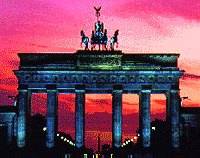
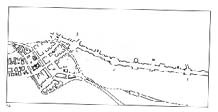
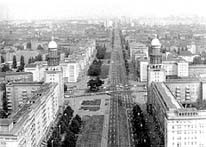
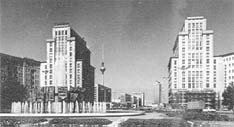
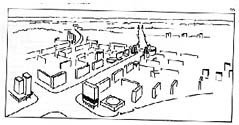
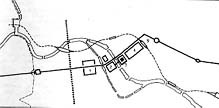
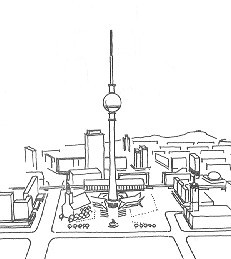
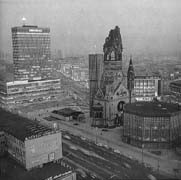
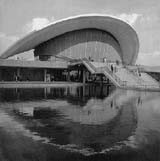
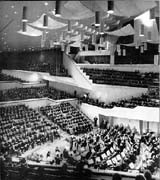
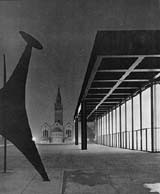
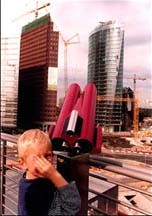
 Cities
Cities